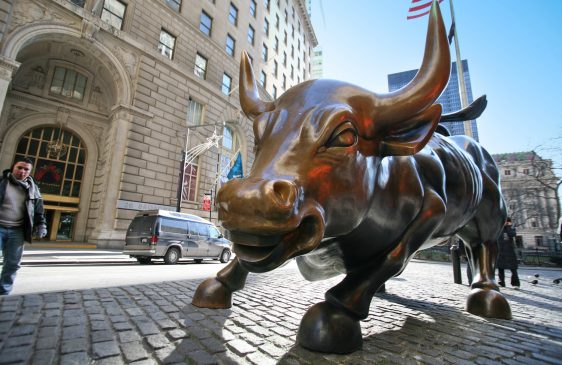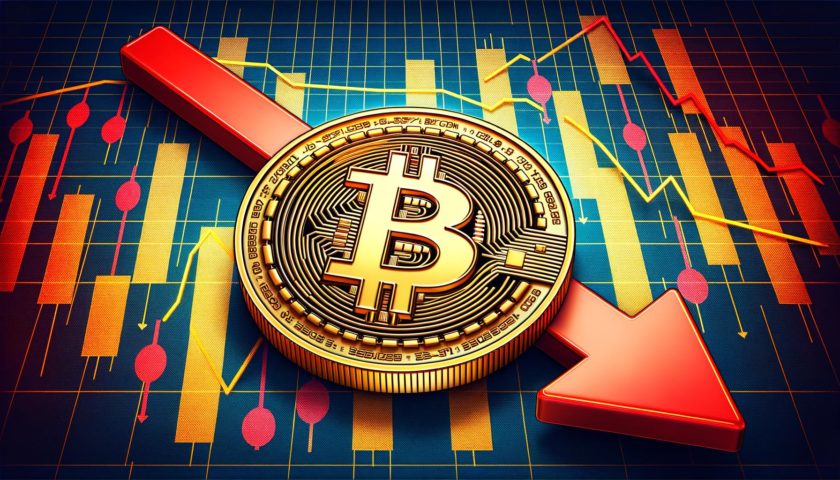The Takeaway
- Bitcoin prices have more than doubled in 2019, far outpacing the 31 percent return for U.S. tech stocks, which Goldman Sachs deems the best-performing asset class year-to-date.
- Outsize returns could attract interest from big investors in the yield-starved traditional financial markets.
- Executives at data firm Messari say bitcoin prices, currently around $8,200, could rally to a new high in the year’s remaining months, topping the $12,902 level reached in June.
Investors would be hard-pressed to name a better-performing asset class so far in 2019 than bitcoin.
Gold? Up 17 percent since Dec. 31. Stocks? The Standard & Poor’s 500 Index returned 21 percent through Sept. 30. Bonds? The 10-year U.S. Treasury bond is yielding just 1.6 percent, close to historic lows.
And bitcoin? Prices for the cryptocurrency finished the third quarter around $8,308 each, according to data provider Messari, up 114 percent on the year. Investors who bought on the last day of 2018 would have doubled their money, and then some.
On Wall Street, one of the chief criticisms of bitcoin is that it was invented only a decade ago (a baby by old-world standards) by a computer programmer (or programmers, nobody really knows), with no real fundamental, underlying value. It’s just a made-up thing, as they say, with a volatile price that only derives from what the next buyer is willing to pay.
But with the global economy slowing and trillions of dollars of government bonds from Europe and Japan trading with negative yields, bitcoin’s price gains this year could conceivably attract a new wave of investors who previously wouldn’t even take a look.
Already there are signs they are. Pantera Capital, one of the earliest cryptocurrency funds, recently scheduled an event in San Francisco for its existing investors featuring cryptographer and digital currency pioneer Nick Szabo. As word trickled out, a number of investors who had never touched the asset class contacted the firm requesting invites, said Paul Brodsky, a partner at Pantera.
“There’s a lot of drama around it all, there’s a lot of energy, there’s a lot of press,” Brodsky said. “We’re getting interest from significant institutional investors of all types.”
Fear of missing out
The year’s price gains might entice big institutional investors like pension funds and endowments, struggling to hit return targets so they can meet obligations to retirees and other beneficiaries, according to executives at the cryptocurrency-focused investment firm KR1.
“Bitcoin’s been around long enough now where people are more familiar with it,” said Keld van Schreven, a director at the London-based firm, adding:
“Yep, it swings wildly, but they might know other people who have bitcoin, and say to themselves, ‘Hey, they’ve done pretty well this year.’ It’s always down to fear of missing out.”
In a report this week, analysts for the Wall Street firm Goldman Sachs ranked information-technology stocks as the best-performing sector year-to-date with a 31 percent return, noting the out-performance versus other asset classes like bonds and gold.
Bitcoin wasn’t mentioned in the report, a reminder that the market remains in its infancy; big Wall Street firms aren’t yet trading digital assets in any significant scale. But year-to-date, bitcoin’s price gains are nearly four times the level of those hottest-of-hot tech stocks.
Many investors first noticed bitcoin in 2017 as prices famously rose more than 20-fold, reaching an all-time high of $20,089 in December of that year. After an abysmal 2018, bitcoin is now 59 percent off that peak, according to Messari, a New York-based provider of data on the crypto markets.
But at the current price, the digital currency is still up more than 10-fold from its level at the start of 2017’s rally.
Store of value
One of the long-term arguments for bitcoin is that, unlike stocks and bonds whose prices are often highly sensitive to the decisions of central banks and governments, the cryptocurrency is independent of sovereign authorities. Instead, it’s governed by fixed policies that are hard-coded into the underlying network, and therefore difficult to change.
Under those rules, the supply of bitcoin is capped at 21 million, so it won’t be prone to inflation like developed-market currencies such as the U.S. dollar, euro and yen might be if their respective central banks resorted to more money-printing as a way of stimulating their economies.
Indeed, President Donald Trump, running for reelection in 2020, has repeatedly called for steeper interest-rate cuts by the Federal Reserve, while accusing China of artificially pushing down the value its currency, the yuan, to get an unfair advantage in international trade.
Many cryptocurrency proponents characterize bitcoin as Gold 2.0 – essentially a newer, technologically improved and more portable form of the precious metal, viewed since ancient times as a reliable store of value.
“Bitcoin is slowly becoming digital gold, but it’s not there yet,” said Qiao Wang, New York-based Messari’s head of product.
No safe haven
For now, though, even professionals in the space acknowledge that bitcoin is highly speculative; many traders are just betting on whether the next series of price ticks will be up or down.
“At the end of the day, bitcoin is still a very speculative asset,” says David Martin, chief investment officer at the cryptocurrency investment firm Blockforce Capital in San Diego. Because of the dramatic price swings in recent years, or even on a daily basis, he says, “it’s not a safe-haven asset.”
Martin noted that prices for bitcoin have declined in recent months, from a 2019 high of about $12,900 on June 26, partly because of waning enthusiasm in the industry over the near-term prospects of a wave of institutional money coming into the market.
Intercontinental Exchange, the owner of the New York Stock Exchange, debuted a new bitcoin-futures contract last month that was tailored to meet the needs of institutional investors. Yet volume in the new contracts totaled just $5 million on the week.
Compare that with the $26.5 billion of corporate bonds that changed hands each day in the U.S. market during the third quarter, and it’s clear institutions have yet to meaningfully invest in bitcoin.
Vital signs
Some of bitcoin’s internal gauges, though, reveal a healthy and growing market.
For example, bitcoin’s so-called hash rate, a gauge of processing power, has increased this year to about 90 exahashes per second (an exahash is a quintillion hashes), from about 40 exahashes at the start of the year.
And some industry executives think bitcoin prices might be setting up for a rally. Catalysts could include an escalation of Trump’s trade war with China.
Wang says he took an informal poll among his coworkers, and the average forecast for the year-end 2019 price was $13,252.
“The number is totally within the realm of possibility,” he said.
There are risks, too, of course, such as the prospect of a regulatory clampdown. “Obviously it could go a lot lower,” Wang said.
Bull image via Shutterstock




